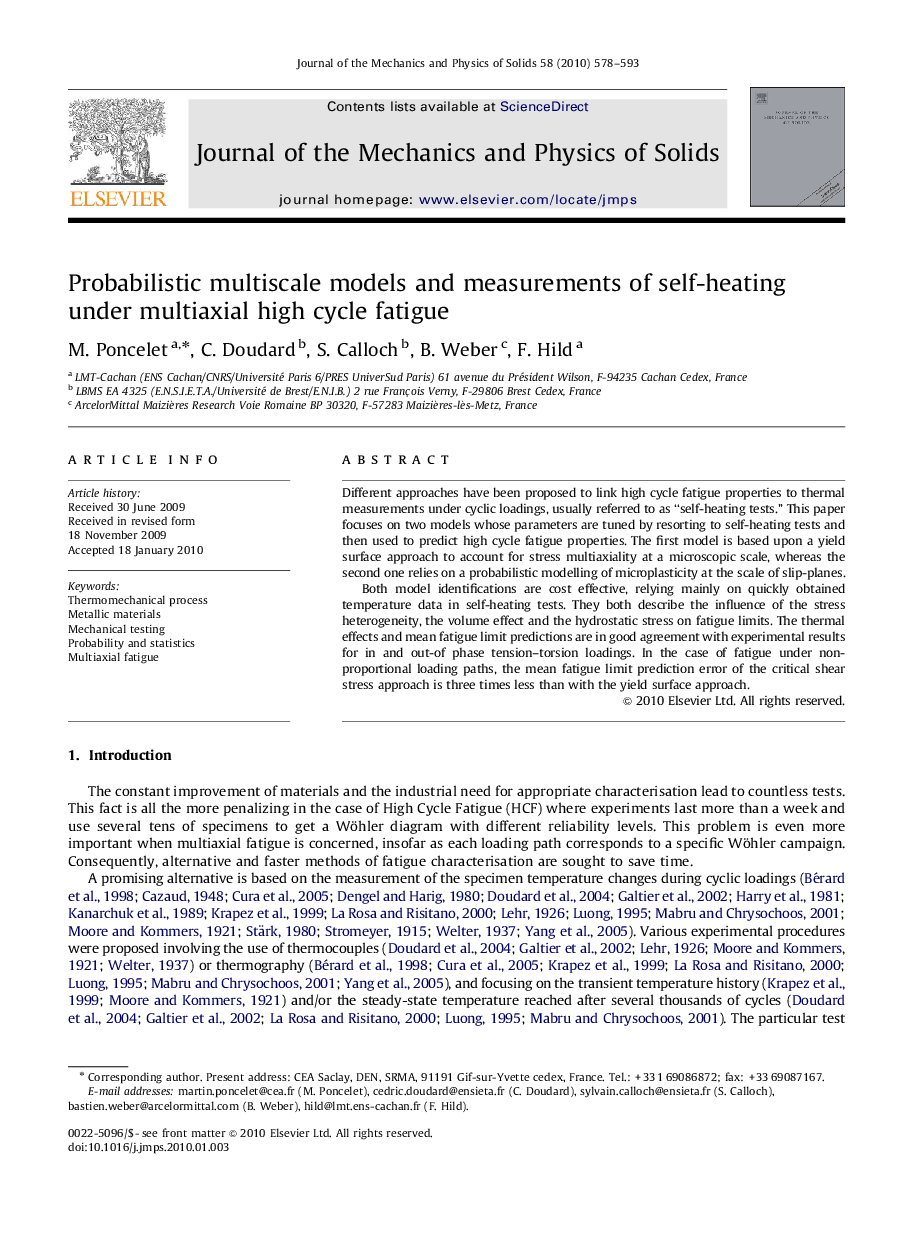| Article ID | Journal | Published Year | Pages | File Type |
|---|---|---|---|---|
| 793618 | Journal of the Mechanics and Physics of Solids | 2010 | 16 Pages |
Different approaches have been proposed to link high cycle fatigue properties to thermal measurements under cyclic loadings, usually referred to as “self-heating tests.” This paper focuses on two models whose parameters are tuned by resorting to self-heating tests and then used to predict high cycle fatigue properties. The first model is based upon a yield surface approach to account for stress multiaxiality at a microscopic scale, whereas the second one relies on a probabilistic modelling of microplasticity at the scale of slip-planes.Both model identifications are cost effective, relying mainly on quickly obtained temperature data in self-heating tests. They both describe the influence of the stress heterogeneity, the volume effect and the hydrostatic stress on fatigue limits. The thermal effects and mean fatigue limit predictions are in good agreement with experimental results for in and out-of phase tension–torsion loadings. In the case of fatigue under non-proportional loading paths, the mean fatigue limit prediction error of the critical shear stress approach is three times less than with the yield surface approach.
